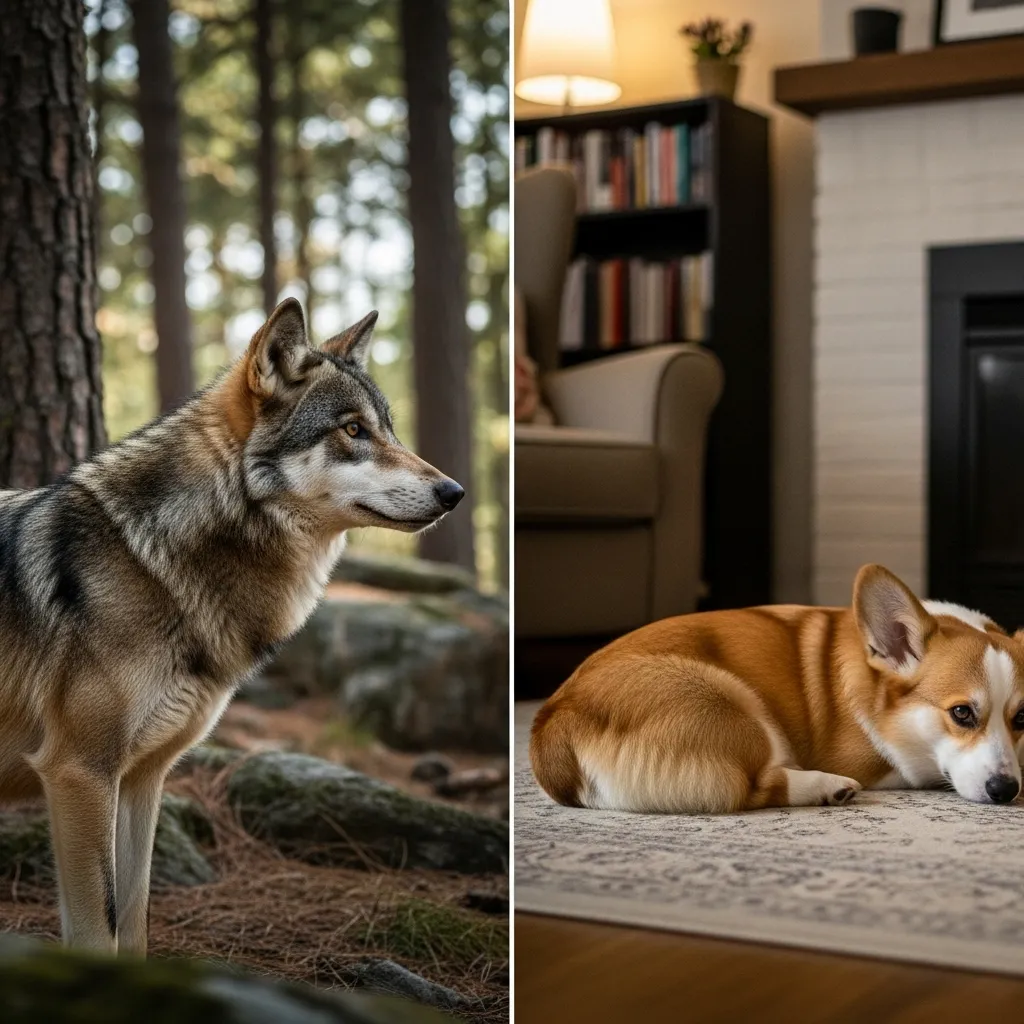
What Changed? The Physical and Behavioral Split from Wolves
The transition from a wild wolf to a domestic dog involved profound changes in both body and mind. Many of these traits are collectively known as “domestication syndrome,” a suite of physical and behavioral characteristics that appear in many domesticated species, not just dogs. These changes are believed to be linked to genetic tweaks affecting neural crest cells, which are fundamental building blocks during embryonic development.
Key Physical Transformations
The physical differences between wolves and dogs are stark. Early dogs began to show a range of new traits not typically seen in their wild ancestors.
Facial and Cranial Structure: Dog skulls are generally smaller than wolf skulls, with shorter, broader snouts, a more pronounced “stop” (the indentation between the eyes), and wider eye sockets. Their teeth also became smaller, reflecting a shift in diet from tearing raw meat and crushing large bones to eating softer, often cooked or starch-rich foods from human leftovers.
Coat and Color: While wolves have a very specific coat pattern designed for camouflage, domestication brought a kaleidoscope of colors and patterns. Spotted, patchy, and solid-colored coats appeared. The texture also changed, leading to the development of curly, wiry, and long-haired varieties.
Ears and Tails: The iconic pricked ears of a wolf often gave way to the floppy ears seen in many dog breeds. Tails, once held low and straight, began to curl up over the back. These traits are thought to be byproducts of selecting for tameness, linked to the same genetic pathways that control adrenaline and fear responses.
Reproductive Cycle: Female wolves typically come into heat only once a year. Domestic dogs, with access to more consistent food sources, began to cycle more frequently, usually twice a year. This allowed their populations to grow much more rapidly.
Profound Behavioral Shifts
The behavioral changes were even more significant than the physical ones. The essence of domestication lies in reshaping the animal’s mind to live cooperatively with humans.
Reduced Fear and Aggression: The single most important behavioral change was a dramatic reduction in fear and aggression toward humans. This trait, tameness, was the foundation upon which all other aspects of the human-dog relationship were built.
Enhanced Social Cognition: Dogs developed an extraordinary ability to read human social and communicative cues. They excel at following a human’s gaze, understanding pointing gestures, and interpreting vocal tones. Studies have shown that dogs outperform even chimpanzees, our closest living relatives, on these tasks. This skill is not just a result of training; puppies demonstrate this ability from a very young age, indicating a strong genetic component.
Neoteny (Retention of Juvenile Traits): Many adult dogs retain behaviors and physical features characteristic of wolf pups. This includes playfulness, curiosity, and a subordinate, dependent relationship with their human caregivers. This extended puppyhood, or neoteny, makes them more trainable and adaptable to living in a human family.
Vocalization: While wolves do bark, they do so infrequently and usually as a specific warning. Dogs, on the other hand, have developed barking into a much more varied and frequent form of communication, used to signal alarm, excitement, loneliness, and a range of other states. This change likely made them better sentinels for their human partners.
Understanding these evolved traits is directly relevant to modern pet care. A dog’s innate ability to read our body language is why positive reinforcement training, which relies on clear cues and rewards, is so effective. Their inherent playfulness means that enrichment—activities that challenge their mind—is not a luxury but a fundamental welfare need.















